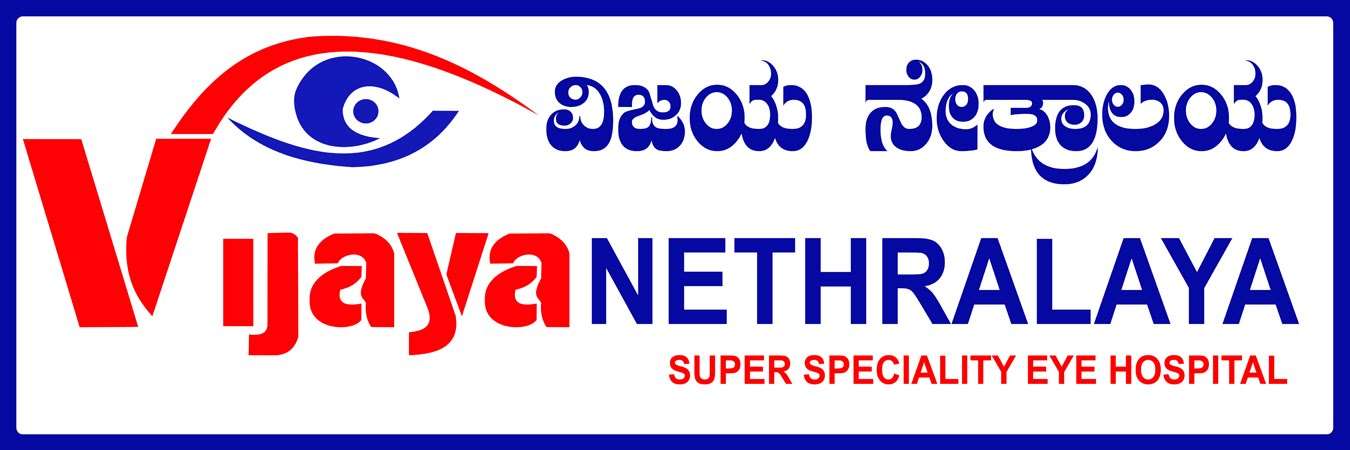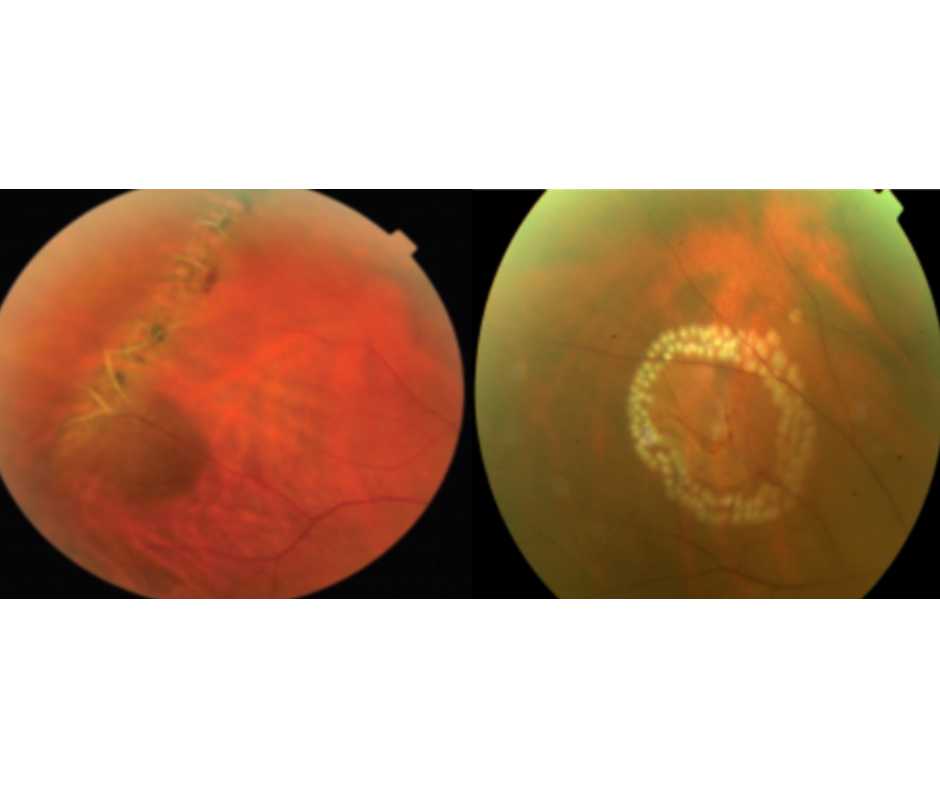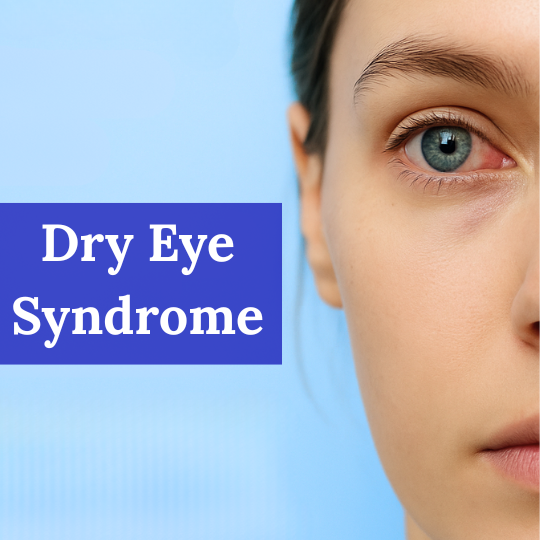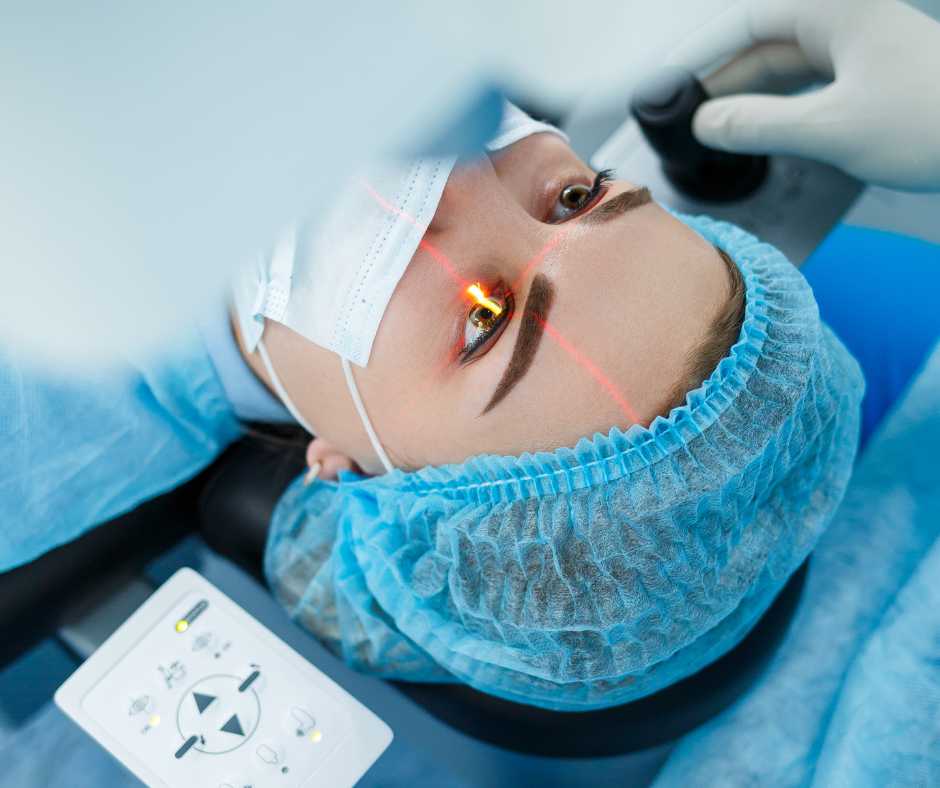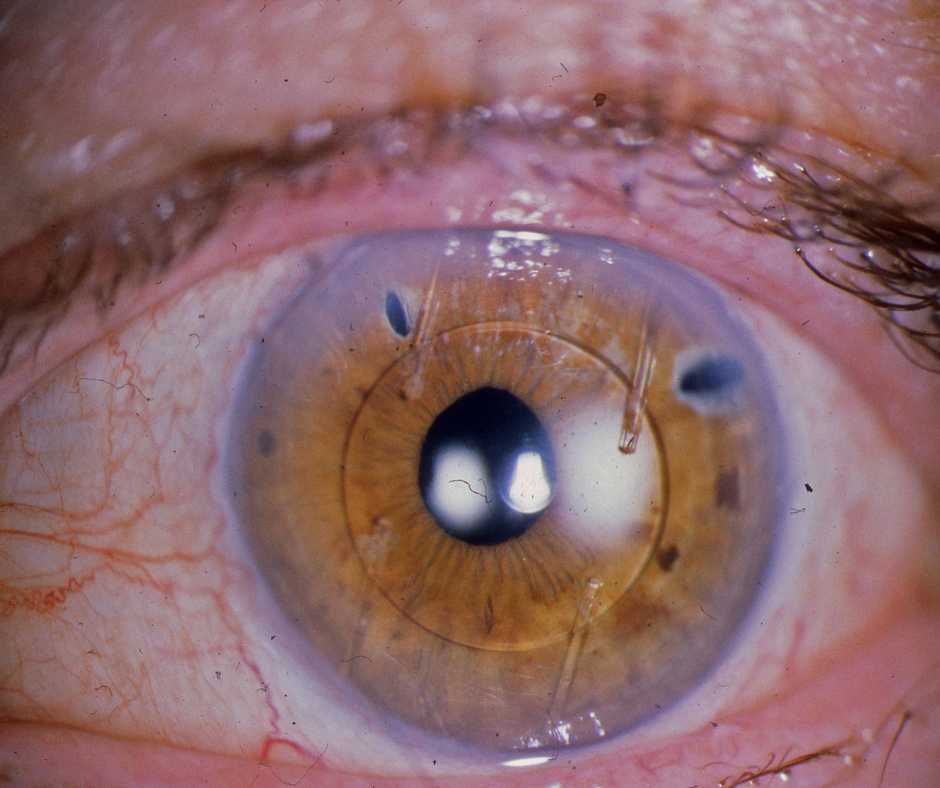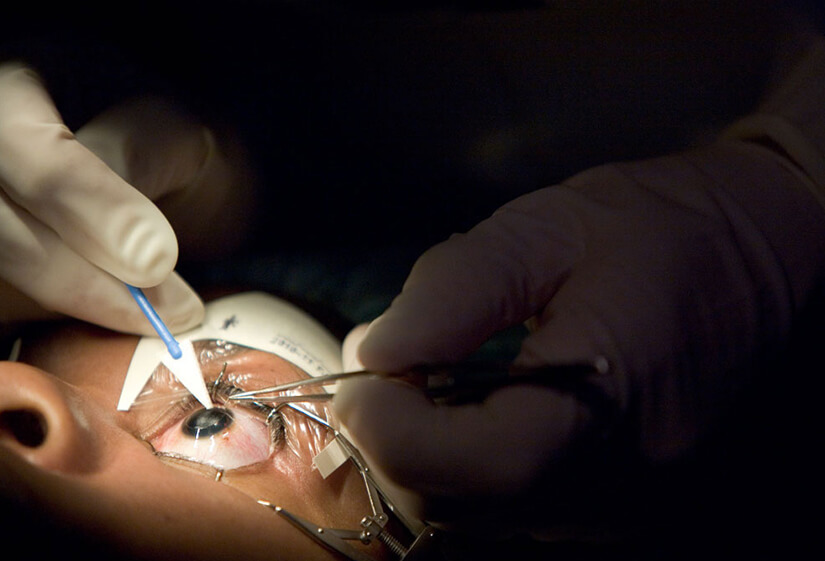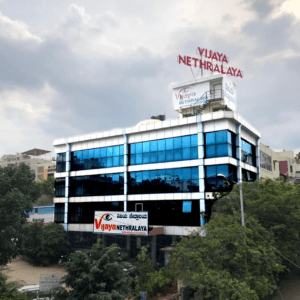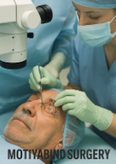What Is Myopia?
Myopia, or nearsightedness, is a vision condition where distant objects appear blurry while nearby objects are clear. It typically begins in childhood and often progresses through the teenage years. Today, more than 50% of children and young adults in urban areas are affected—a trend that’s rising sharply across the globe.
Key Symptoms:
- Blurry distance vision
- Eye strain or headaches
- Frequent squinting
- Difficulty seeing the board at school or road signs
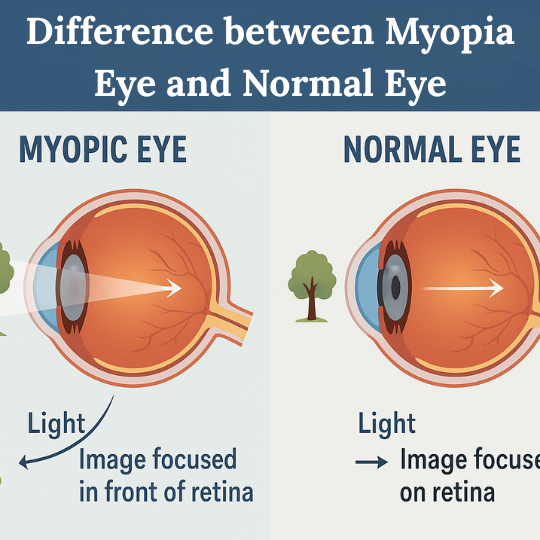
Why Is Myopia a Growing Concern?
Beyond just needing glasses, unchecked myopia can lead to serious eye complications in adulthood, such as
- Retinal detachment
- Glaucoma
- Cataracts
- Myopic maculopathy
Early intervention is key to slowing its progression and preserving long-term eye health.
Most Effective Myopia Control Treatments
1. Low-Dose Atropine Eye Drops
These drops (0.01–0.05%) are applied at bedtime and help reduce the elongation of the eyeball. Research in 2025 shows they can slow myopia progression by up to 60%, with minimal side effects.
2. Orthokeratology (Ortho-K)
These specially designed contact lenses are worn overnight to reshape the cornea temporarily. They offer clear daytime vision and also significantly slow myopia development in children and teens.
3. Multifocal Soft Contact Lenses
Daily lenses like MiSight® are FDA-approved and have proven to reduce myopia progression in children aged 8–12 by over 50%.
4. DIMS Spectacle Lenses
Special glasses (Defocus Incorporated Multiple Segments) use multiple focal points to slow down eye elongation. Comfortable and easy to wear, they’re a great choice for younger children.
5. Red Light Therapy (RLRL)
A newer approach uses safe, low-level red light to stimulate the retina and control eye growth. It’s non-invasive and gaining traction for its promising early results.
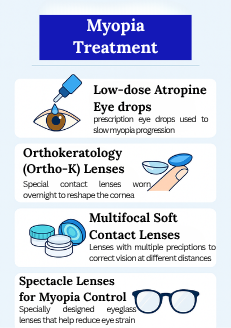
Latest Myopia Control Treatments (2025)
Here are the most advanced and widely recommended myopia control treatments in 2025:
A. Atropine Eye Drops (Low-Dose 0.01%–0.05%)
- Slows down the elongation of the eyeball.
- Safe and effective for children aged 5–18.
- Used once daily under an eye specialist’s guidance.
B. Orthokeratology (Ortho-K Lenses)
- Special rigid contact lenses are worn overnight to reshape the cornea.
- Offers clear daytime vision without glasses.
- Controls progression effectively in children and teens.
C. Myopia Control Spectacle Lenses
- Specially designed lenses like DIMS (Defocus Incorporated Multiple Segments) and H.A.L.T. technology.
- Looks like regular glasses but slows down eye growth.
D. Soft Multifocal Contact Lenses
- Used daily with a central zone for clear vision and peripheral zones for defocus.
- Proven to slow myopia progression by 30–50%.
E. SMILE & LASIK (For Adults Only)
- Refractive surgeries like SMILE Pro and LASIK correct myopia but do not stop progression.
- Recommended only after myopia has stabilized (typically after 20–21 years).
Expert Advice for Parents
If you’re a parent, here’s how you can help your child manage myopia effectively:
Schedule Early Eye Exams
Children should have their first eye exam by age 5, or sooner if vision issues are suspected.
Ask About Myopia Control Options
Not all eye doctors offer myopia control treatments. Ask specifically about atropine drops, Ortho-K, or special lenses.
Encourage Outdoor Time
Studies show spending 90–120 minutes outdoors daily reduces the risk of developing or worsening myopia.
Manage Screen Time
Limit digital device use and ensure regular breaks (use the 20-20-20 rule: every 20 minutes, look at something 20 feet away for 20 seconds).
Prevention Strategies for Children and Adults
While genetics play a role in myopia, several proactive steps can reduce the onset and progression:
For Children:
- Start vision screening at 6 months, 3 years, and before school.
- Avoid holding screens too close (minimum 30–40 cm).
- Use larger fonts and increase contrast on digital devices.
For Adults:
Get annual comprehensive eye checkups to detect early changes.
Take regular breaks from near work.
Avoid using smartphones or tablets in bed or low light.
Lifestyle & Environmental Influences
Environmental and behavioral changes play a huge role in managing and preventing myopia:
| Factor | Impact | Action |
|---|---|---|
| Outdoor light | Reduces eye elongation | Minimum 2 hours daily outside |
| Urban living | Increases screen exposure | Balance indoor/outdoor time |
| Digital devices | Strains eyes | Use blue light filters and frequent breaks |
| Diet & sleep | Affects eye health | Eat leafy greens, sleep 8 hrs |
How to Choose the Right Eye Specialist
When dealing with progressive myopia, it’s crucial to consult a specialist trained in myopia management.
Look for:
- Pediatric ophthalmologists or optometrists with experience in myopia control.
- Clinics offer the latest diagnostic tools like axial length measurement.
- Transparent pricing and clear explanations about treatment options.
❓ Frequently Asked Questions
Q1: Is myopia reversible?
A: No, but it can be slowed or stabilized with early treatment.
Q2: Are these treatments safe?
A: Yes. Most treatments, like atropine drops and Ortho-K, are clinically proven and safe for kids.
Q3: Should I be concerned if my child’s prescription changes yearly?
A: Yes, rapid changes may indicate progressive myopia. Early control is critical.
Final Thoughts: Take Control Early
Myopia is more than a vision issue—it’s a growing public health concern. The good news is, with today’s advanced treatments and preventive care, it’s possible to slow or even stop its progression. Whether you’re a parent guiding your child or a young adult managing your own eye health, early action makes all the difference.
📍 Want to Know the Best Treatment for You or Your Child?
Schedule an eye exam with a certified myopia control specialist near you today.
🔗 Click the link in bio to learn more.
📞 Book a consult: +91 78924 92098 / +91 98804 66486
🌐 Visit: vijayanethralaya.com
